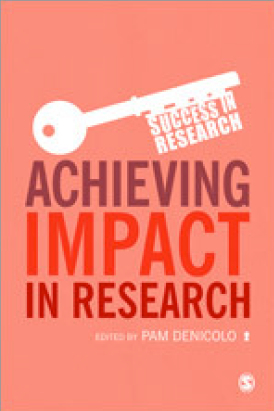How Individual Scholars Can Reduce the Rigor-Relevance Gap in Management Research
October 25, 2013 1 Comment
See on Scoop.it – Dual impact of research; towards the impactelligent university
Abstract:
This paper discusses a number of avenues management scholars could follow to reduce the existing gap between scientific rigor and practical relevance without relativizing the importance of the first goal dimension. Such changes are necessary because many management studies do not fully exploit the possibilities to increase their practical relevance while maintaining scientific rigor. We argue that this rigor-relevance gap is not only the consequence of the currently prevailing institutional context in the scientific system, but that individual scholars can reduce the gap between rigorous and practically relevant research by modifying their research work. Thus, most of our suggestions refer to individual scholars’ research activities and relate to specific steps in the (empirical) research process. Our discussion does not imply that all management studies should be practically oriented; basic research will remain a very important part of management research. However, we believe that not enough management research studies are significantly influenced by practical relevance. The authors: ” The discussion of these suggestions has shown that significant changes are necessary in the area of idea generation, in the area of testing ideas, as well as in the area of their presentation. If the practical relevance of management research is to increase, modifications will have to be made in all stages of the
(empirical) research process. An integrative view of these suggestions shows the advantages of close cooperation between scholars and practitioners. This insight is fully consistent with the results of the publications by Gibbons and colleagues (Gibbons, Limoges, Nowotny,
Schwartzman, Scott, and Trow 1994; Nowotny, Scott, and Gibbons 2001). According to them, the generation of new knowledge is increasingly due to joint efforts by scholars and practitioners. This will
help management research become “a contextualized science” (Nowotny, Scott, and Gibbons 2001, p. 90) and to advance its stock of insights from “reliable knowledge to socially robust knowledge” (pp.
167 et seq.).1 Moreover, the current paper has shown that if the
scientific community is to reduce the rigorrelevance gap, it will have to master the challenge of increasing the creativity of the research results and the consistency of management research’s body of knowledge. The integration of these two goals is not a trivial task. Nevertheless, management’s scientific community should be able to reduce this conflict, as not all research projects have to be both highly creative
and highly commensurable with the existing stock of knowledge.” Source:How Individual Scholars Can Reduce the Rigor-Relevance Gap in Management Research
Joachim Wolf
University of Kiel – Faculty of Economics and Social Sciences
Timo Rosenberg
University of Kiel
BuR Business Research Journal, Vol. 5, No. 2, pp.178-196, November 2012
See on papers.ssrn.com









